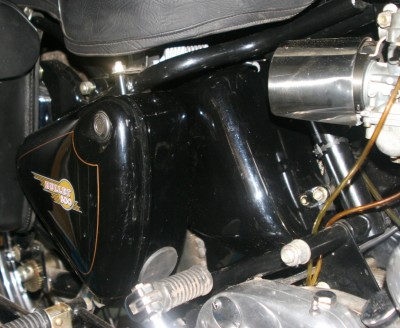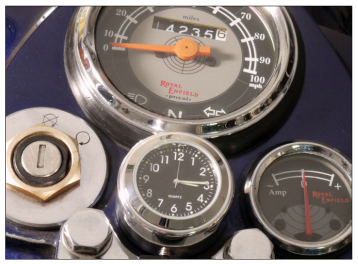The sun came out today and the temperature went up to 4° Centigrade. I decided to take the chance and road test Thumper now that I’ve done all my winter modifications.
The saddle definitely lifts me up by a few inches. I realised this when I looked into my mirrors. They were way off. The single saddle being higher means that my hips aren’t as cramped as they were with the old flat seat which actually means I’m more comfortable on the bike. The ride was better too, those extra springs under my arse make a big difference.
I have to admit, I get more pull out of Thumper with the new air filter and new carburettor jetting. He gets away like a scalded cat and the top end is more open. I didn’t press it because it’s still very cold here and the roads may be a bit icy in places but I was up to the 100 km mark in a couple of places and didn’t realise I was going so fast.
I took one of my usual routes round the western side of the island of Amager. This is flat land and the wind gets across it unhindered so one has to bear that in mind, so, easy did it. Heading first south and then west I reached the coast in about a half hour. I stopped virtually at the waters edge and decided to take a break, stretch my legs and smoke a cigarette.
A stunning view, clear air and skies and glorious early year sunshine. The quiet was broken only by the sound of geese flying overhead and the wind in the grasses that line the shore. This, I thought, is what it’s all about. Getting away for a while and living life. Next time, I’ll take the camera. In the meantime, there’s a picture below of the local power station taken from the shore where I stood.
Eager to try the bike in a more urban environment, I rode back towards home through the suburbs of Kastrup, carefully dodging the 4 wheeled motorists and the cyclists, the latter of which have no respect for the rules of the road. No problems with the bike, Thumper does as is expected and no uneasy moments.
So I’m pleased with the results. Even if I did get cold fingers..!









